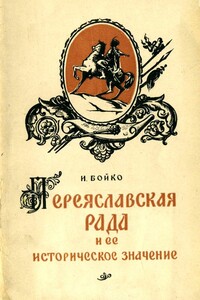Андин. Исторические очерки об армянах в Китае - [14]
According to Henry Yule, a 19th century British scientist, this journey provided us with answer to one of the most exciting geographic questions, particularly, weather we may identify Cathay with China and Khanbaliq with Beijing. A Latin version of the story of Bento de Göis and Isaac edited by Nicolas Trigault and entitled “De Christiana expeditione apud Sinas suscepta ab Societate Jesu” was published in Augsburg in 1615. Trigault’s edition was based on diaries written by Matteo Ricci, an Italian missionary. Since this version contained numerous errors, another edition called “Fonti Ricciane: documenti originali concernenti Matteo Ricci” soon came to light by Pasquale d’Elia. The first English translation of this work was published in the 20th century.
In 1907, in commemoration of the 300th anniversary of that journey, a statue of Bento de Göis was erected at Villa Franca de Campo on the Azores Islands. The statue shows Bento wearing Armenian merchant’s attire exactly as it had been described in Trigault’s Latin source. The details of the journey are of a high importance for historical science. You can trace almost month by month how the travelers walked thousands of miles encountering numerous obstacles. For a few times, only Isaac’s selfless service helped Bento de Göis to escape inevitable death. The section where Armenian merchant’s attire with all its original elements is described represents particular interest. According to Trigault’s Latin source, Bento could make his way to China only under the disguise of an Armenian, otherwise being identified as a Portuguese he would certainly be stopped.
A caravan, that Bento and Isaaf joined, consisted of 500 people. It should take them to the East. After having lost many animals on the way, the travellers soon reached the Tarim Basin, a region surrounded by dozens of small states, particularly of a Muslim origin. Nevertheless, Bento and his companion managed to put the detailed descriptions of their everyday life together. While approaching China’s borders, Bento de Göis and Isaac realized that their mission was almost over. Learning about presence of Jesuit brothers in Beijing, Bento de Göis discovered that China (Sinica) and Cathay were the same. In 1605 two travellers reached modern Suzhou where they waited for a new caravan. It might take another six years until a new caravan to Beijing could be organized. Bento sent two letters to Beijing trying to establish a contact with the Jesuit mission. The Jesuit messenger, a young Chinese named Ferdinand, came from Beijing only in 1607. This news found Bento being sick. As a result, he died eleven days after it. After Bento de Göis’s death, according to a tradition, the property and wealth of the late merchant was divided among other merchants. Some time after it Isaac undertook a journey to Beijing being accompanied by Ferdinand. Jesuits gave the Armenian a warm welcome. During his visit of China’s capital Isaac told Bento’s story to Matteo Ricci who recorded it in Italian. Afterwards he made to Macau, a Portuguese colony in the Far East, where he stayed for a while and then despatched to India. On his way to Lahore he learned about his wife’s death and decided not to return to the land of the Mughals but to settle in Portuguese colony of Chaul, some sixty kilometers away from Mumbai. Isaac’s further destiny is unknown.
Information provided by merchants on the trade relations in the seventeenth century is of a special significance for historiography. It is worth of noting that Isaac lived in Lahore with his family before 1604, i.e. witnessed the deportation of Armenian families by Shah ‘Abbas I of Persia from Armenia to Isfahan resulted in establishing of the Armenian quarter of Nor Jougha (New Julfa), the future centre of Armenian trading network in Persia.
The travels of Bento de Göis, a Portuguese, and his Armenian companion Isaac represent an interesting source for the history of Armenian-Chineese relations.
ՄԱՆՐԱՄԱՍՆ` ԲԵՆՏՈ ԴԵ ԳՈՅԻՇԻ ԵՎ ԻՍԱՀԱԿ ՀԱՅԻ
ՃԱՆԱՊԱՐՀՈՐԴՈՒԹՅԱՆ ՄԱՍԻՆ ԴԵՊԻ ՉԻՆԱՍՏԱՆ
Ամփոփում
Մարկո Պոլոյի ճանապարհորդությունից սկսած, Եվրոպան ճանաչում էր այսօրվա Չինաստանը Քաթայ անվանումով, իսկ ժամանակակից Պեկինը` իբրեւ Խանբալիկ: Երբ Հեռավոր Ասիայում հայտնված առաջին պորտուգալական գաղութները սկսեցին առնչվել Չինաստանի հետ Եվրոպան կրկին տեղեկացավ Պեկինի մասին: Շատերը սկսեցին կասկածել, որ խոսքը գնում է նույն պետության մասին՝ եւ Խանբալիկը ու Պեկինը կարող է լինել նույն բնակավայրը:
Այդպիսի պատմական դրվագների շարքին է պատկանում պորտուգալացի ճիզվիտ Բենտո դե Գոյիշի եւ Իսահակ Հայի ճանապարհորդությունը` Մողոլական Կայսրության երկրորդ մայրաքաղաք Լահորից դեպի Չինաստան 1602-1607 թվականներին: Ինչպես գրել է 19-րդ դարում բրիտանացի գիտնական Հենրի Յուլը, այդ ճանապարհորդությունն էր, որ լուծեց աշխարհագրական կարեւորագույն հարցերից մեկը, նույնականացնելով «Քաթայ» եւ «Չինաստան» երկրներն իրենց մայրաքաղաքներով: Յուլը նշում է, որ Բենտո Գոյիշի եւ Իսահակի բացահայտումի շնորհիվ գրքերի էջերից եւ քարտեզներից անհետացան Քաթայն ու Խանբալիկը, տեղը զիջելով մեզ այսօր ծանոթ անվանումներին:
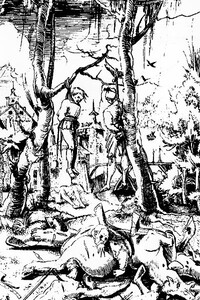
Как и когда происходила смена гегемона в мир-экономике за последние 500 лет. Cтатус гегемона определял, кто будет эксплуатировать мировую периферию, присваивать прибавочный продукт, созданный в других регионах мира, устанавливать торговые монополии, получать доступ к дешевым ресурсам, в том числе трудовым, и контролировать рынки. Кто сейчас идет на смену нынешнему гегемону, в каком виде это будет происходить и возможно ли изменение принципов, на которых основывается мир-экономика.
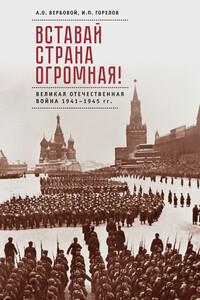
В монографии представлен обзор крупнейших оборонительных и наступательных фронтовых операций периода Великой Отечественной войны. Важное значение в боях сыграло тесное взаимодействие фронтов, армий, их командующих, командиров среднего звена и рядового состава, что нашло отражение в данной работе. В книге также дано краткое описание предвоенной политики Советского Союза, событий начала Второй мировой войны, которые сегодня активно обсуждают.
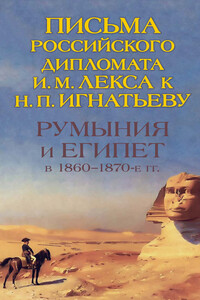
В книге впервые публикуются письма российского консула И. М. Лекса выдающемуся дипломату и общественному деятелю Н. П. Игнатьеву. Письма охватывают период 1863–1879 гг., когда Лекс служил генеральным консулом в Молдавии, а затем в Египте. В его письмах нашла отражение политическая и общественная жизнь формирующегося румынского государства, состояние Египта при хедиве Исмаиле, состояние дел в Александрийском Патриархате. Издание снабжено подробными комментариями, вступительной статьей и именным указателем.
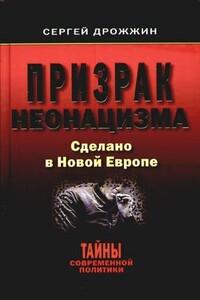
Мало кто знает, что антисемитизм и расистские взгляды всегда были широко распространены в этой стране и не случайно стали типичными для некоторых немецких политических деятелей. При этом антисемитизм и расизм не умерли с гибелью нацистского государства – они живы в Германии и сейчас.Задача этой книги – восполнить пробелы в нашем представлении о Германии, а также сделать для себя выводы на будущее.

Цель этой книги – показать, как воспринимали, ощущали и оценивали революцию и ее отдельные этапы люди, которые были поставлены событиями на ответственные посты. Речь идет не о рядовых участниках и свидетелях революции, а исключительно об ее руководящих фигурах. Составитель намеренно исключил из книги ортодоксально-большевистских авторов, так как их концепции и изложения революции слишком хорошо известны.
